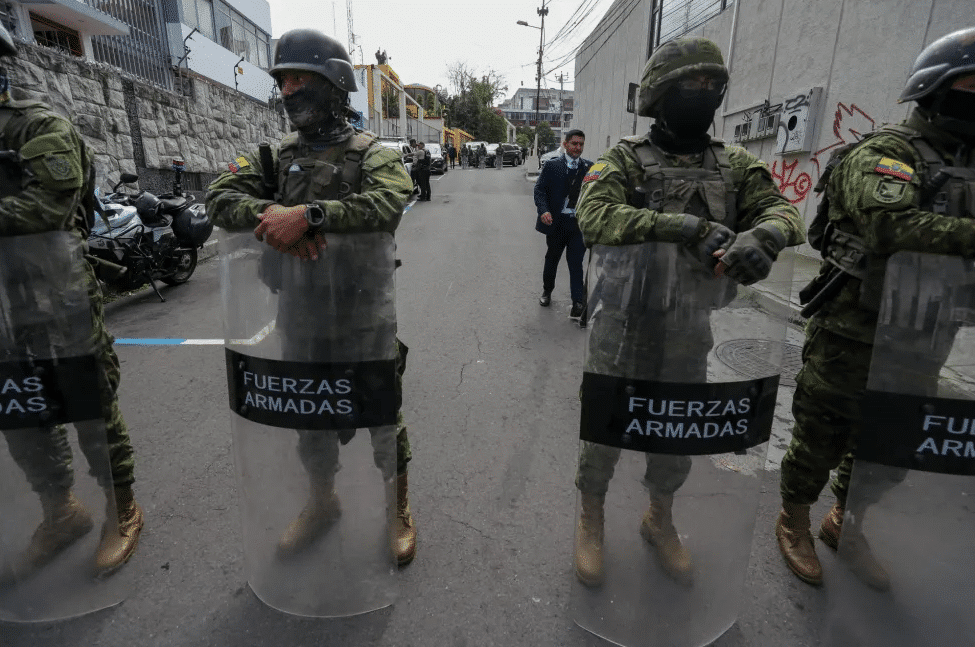20 de mayo 2018

The Return of the Military

PUBLICIDAD 1M
PUBLICIDAD 4D
PUBLICIDAD 5D
Mayor Sadrach Zeledon is accused of directing the official violence and th

Mayor Sadrach Zeledon is accused of directing the official violence and the pro-Ortega violent mobs. Residents of Matagalpa neighborhoods came out to defend protesting students.
Confrontations pitting the riot squads and government-sponsored mobs against citizens and students who had gathered spontaneously to protest left at least three fatalities in the city of Matagalpa this past Tuesday. Confidencial was only able to corroborate the death of one of them – Henry Arauz -, via the doctors who were with him and the local branch of the Nicaraguan Human Rights Center.
Mayor Sadrach Zeledon announced in the official media the additional deaths of Wilmer Rivas Gonzalez, 37, who worked for the mayor’s office, and Jose Alfredo Urroz Jiron, 28.
On Wednesday morning, Confidencial confirmed that a toddler of 18 months had also been wounded in Matagalpa by a stray bullet that entered near her chin and lodged in her trachea. Channel 4, which belongs to the ruling party, affirmed that the bullets came from “vandals”, but the child’s family members vehemently rejected that version, insisting that they came from the Police. The child survived, but remains in serious condition.
University and high school students from Matagalpa, as well as religious figures there, spoke with Confidencial on Tuesday night. They all recounted that the disturbances had begun very early on that same day. The students formed barricades across the exit from the city to the highway to Managua. However, few of them were still there later Tuesday morning when some thirty members of the riot squad arrived in the area to break up the peaceful protest.
According to the group of university students, who asked to remain anonymous, the riot squads attempted to disperse them with tear gas and rubber bullets, but residents of the surrounding neighborhoods immediately came out to defend them.
“There was popular support for the kids,” stated Sadiel Eugarrios, a seminary student from the Matagalpa diocese. Accounts agreed that upon finding themselves outnumbered by the residents, the riot squad were forced to retreat. However, as the demonstrators advanced, they then began to shoot live ammunition. Several videos are circulating showing the agents shooting with AKA rifles and their pistols.
Dr. Douglas Pravia, general director of the Santa Fe private clinic in Matagalpa, confirmed to Confidencial that up until six pm on Tuesday they had attended to 18 people with bullet wounds, several of them serious. They were unable to offer more information since they were “still caring for the injured.”
Around the city and behind the barricades, medical students and doctors showed their solidarity by uniting to care for the wounded, setting up seven medical stations to offer urgent care. According to these doctors, some 60 people were wounded in Matagalpa, including bullet wounds, shrapnel and contusions. At the moment that Confidencial visited the urgent care centers, the numbers were still undetermined because they hadn’t been able to keep a list. In one of the medical stations, the name of each injured person was noted in a little book in a pet store, because it was the only thing they could find. The papers were bloodstained, as were the hospital gowns personnel were wearing.
The doctors here stated that they had set up the medical outposts because Matagalpa’s public hospital wasn’t attending to those wounded in the protests. The most seriously injured were being transported in an ambulance to the Santa Fe, a private clinic that was willing to provide medical attention.
The morning attack extended through midday. At that time, the Catholic priests and seminary students donned their habits and entered the fray to try and mediate between the two sides in order to end the violence. Carlos Blandon, parish priest of the San Jose Obrero del Tuma Church arrived in Matagalpa very early and joined the work of pacification amid the flying bullets. However, it proved impossible.
“A few students and residents paid attention to my requests, but since there were so many of them it was a bit impossible. We spoke with a captain in the National Police, asking him to retire the troops, but he told us no, because his orders were to remain where they were,” Blandon recounted in the Matagalpa Cathedral. This temple was also converted into a field hospital to attend to the injured who were later sent on to the Santa Fe clinic.
The tension continued through the night after a group set fire to a police station. On the one hand, the authorities blame the demonstrators, and the university students blame the police officials and the government shock troops. The clearest thing in Matagalpa at press time was the lack of clarity regarding the events, a confusion impossible to clear up given the level of conflict in the streets.
The university students and general population insisted to Confidencial reporters that there were “snipers present” on the hills surrounding the city in the El Calvario, Apante, and San Francisco barrios. Around 11 at night when we visited one of the barricades near the San Francisco school, the students asked us to walk hugging the walls of the houses in fear of a bullet, and to run across the streets at the corners.
“There’s a lot of evidence of snipers in the hills and it would be a good thing if the National Police would stop this and make the corresponding pronouncement,” asserted parish priest Blandon. The Catholic Church has been key to mediating the conflict in Matagalpa.
PUBLICIDAD 3M
Periodista. Destaca en cobertura a violaciones de derechos humanos: desplazamiento forzado, tráfico ilegal en territorios indígenas, medio ambiente, conflictos mineros y ejecuciones extrajudiciales. Premio Iberoamericano Rey de España 2018.
PUBLICIDAD 3D